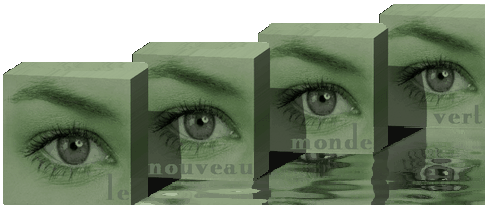In the architecture of houses and of the psyche,
the mind is, of consciousness, the chamber
in this house of one's life, manifest and earthly,
lies the secret of needed connection to others
through the windows of our senses, our eyes.
If awareness through connectness pre-conditions harmony,
our providers can control how people think
through how they live within these, their shells,
into separatedness, often, inward to sink
when each is blocked in by impenetrable walls
and our best physical plan must be open-plan,
each's own space flowing into that of others,
even as windows open out into a garden
so enable one to be at one with creation's endlessness.
But put a person into the closed-in caves concrete
of a honey-combed, isolated apartment
and one fragments all sense of community
for which is needed our spaces' continuity,
whereas, in the former, old-fashioned terraced street
we had, have much better chances each other to meet
with spaces outside where we can our lives share
in more convivial, communal circles everywhere
and that overlap, for ghettoes are built, encouraged
by how our towns and cities are out-laid,
while the separate, walled mansion on the hill
expresses of separate superiority, the means and will,
while the hut-circles of our ancestors
could ensure our whole tribe's togetherness.
To constrict a mind-body into spaces small
perpetuates the mind-sets of a prison cell
from which each seeks escape through television
and other forms of voyeuristic vision,
or into one's own ego's fantasies
often unrelated to actualities-
these mass-media can manipulate those people
who no longer, with each other, together dwell,
without a large room there to invite
in others for more real and shared delight
and so declines our sensitivity communal
as we each, into mutual alienation fall
unlike the common courtyard or ancient, tribal meeting place
where we can all interlink our otherwise separate space.
Thus, it is, that, in our cities of swarming millions
most people scarcely know of or know each other,
severed of all solidarity, that so vital sense
that could make us, each and all, as sister and brother
and thus, as we would our world redesign
for more collective, caring living utopian
we need to redesign of each our living shells
to make them more like heaven, less like this hell
whose physical image of our alienations
are our fragmenting apartment blocks across all our nations,
far better for our awareness to be open-plan
all embracing the other, as and where we can
while inside each of our shells lies our sanctuary
a shrine to our lives' common, infinite deity.
So, let our designs be centred around sacred space
and not around our material possessions,
spiritually pervading our every living space
for our self-and-mutual liberations,
spaces artistic and self-created,
even as the best awareness is inner-self generated,
and not from outside, beyond our enclosing walls
or through but blinkered eyes or windows small
where we may foregather on each special day
as once used to do friends and family
for entertainment and pleasure mutual
Yes, we are indeed connected, but by 'remote media'
but, how sadly, often are never closer together.
So let us all envision a far more open world,
our sealing doors and windows out and open hurled
to let in the sounds of Nature - or of the street,
again, each other, as one humanity, to greet,
aware ever of the greater, eternal creation
even if this be via a tiny garden,
bursting with life, tree, flowers and birdsong
even as Adam in Eden did belong.
More open living makes for more open minds
and a longer-lasting connectness-
for, willy-nilly, we are all parts of the One,
whether or not that to ourselves be known-
as those who design our living spaces can our minds control,
Then, let us design our own, for ways of living more whole.
© 2008 David Allen Stringer
Other essays of interest . . .






